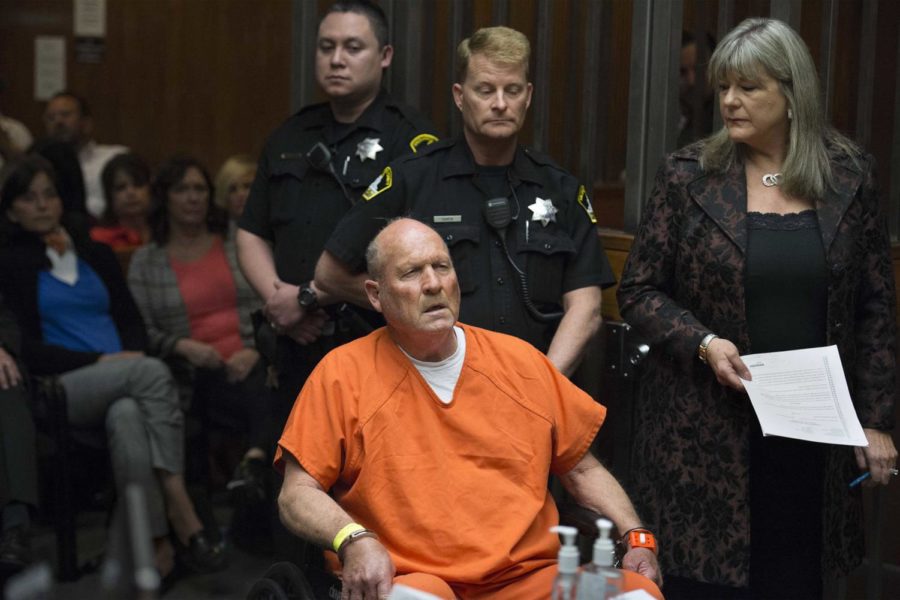The Fault in Our Genes
People’s private genetic information needs to be protected from use by law enforcement and the judicial system.
PHOTO | TNS
Joseph James DeAngelo, the suspected East Area Rapist, is arraigned in a Sacramento courtroom and charged with murdering Katie and Brian Maggiore in Rancho Cordova in 1978 on Friday, April 27, 2018, in Sacramento, Calif. (Randy Pench/Sacramento Bee/TNS)
Twelve women’s lives taken. Fifty women violated. Countless more affected. The so-called ‘Golden State Killer’ traumatized the California community for years. It seemed like the perpetrator of the crimes would get away scot-free, until just last year, detectives identified a suspect. The detectives used DNA found at a crime scene and ran it through a public DNA database, GEDmatch. While it is undeniably beneficial that he was apprehended, the method by which he was identified raises a pressing ethical issue. People’s private genetic information should not be utilized by law enforcement to identify potential suspects, and should even be protected from subpoenas and court orders.
The Golden State Killer Joseph James DeAngelo was apprehended using a public DNA database. His relatives willingly uploaded their genetic information and made it open to the public. Detectives were able to upload the DNA from the crime scene which connected them with DeAngelo’s relatives. DNA testing companies such as 23andMe and Ancestry.com state in their privacy policies that they will resist all requests from law enforcement, including subpoenas and court orders. In both companies transparency reports, they disclose that they have never provided genetic information to law enforcement. Ancestry did not receive any requests for genetic information in 2017, and as of October 2018, 23andMe has received five requests overall. While neither company has provided information yet, it is concerning that this is a possibility at all.
Some may argue that people willingly upload their DNA to the site and agree to the possibility of their DNA implicating them in crimes. However, the DNA of one individual can be used to identify distant relatives and generations before and after them, causing repercussions to ripple through the ages. Sixty percent of Americans with European ancestry can be identified from DNA currently collected in databases, according to a study published in the journal Science. The majority of those people have not taken a DNA test or may not even know one of their relatives have taken the test. These people have no idea their private genetic information, which holds info about their health, genealogy and race, could be avaliable to law enforcement.
Though possible suspects may be identified by comparing DNA profiles, it is highly unlikely they’ll find an exact match. As in the Golden State Killer case, the detectives matched the DNA found at the crime scene to distant relatives of DeAngelo. However, before their identification of DeAngelo, the detectives subpoenaed another public database, Gene-by-Gene, to identify an unnamed 73-year-old Oregon man as a suspect, according to CBS. After obtaining a court order to collect DNA from the man and questioning his family, he and his family were cleared of any suspicion. This case of misidentification sets a dangerous precedent for the future. As detectives rely more heavily on DNA matching to identify suspects, so will the misidentifications, implicating innocent people and subjecting their genetic information to government oversight.
Regardless of the benefits, law enforcement should not have access or have the ability to gain access to people’s personal genetic information. Not only can people be falsely identified or connected to crimes, but they can also be identified without ever consenting or knowing their genetic information is available. As these tests become ever more popular, so will the unjustified probes into these databases by law enforcement. Protections must be put into place now to protect the American people from the egregious breach of privacy.
This editorial reflects the views of the Le Journal staff. Eleven out of 20 members voted in favor of this editorial.



